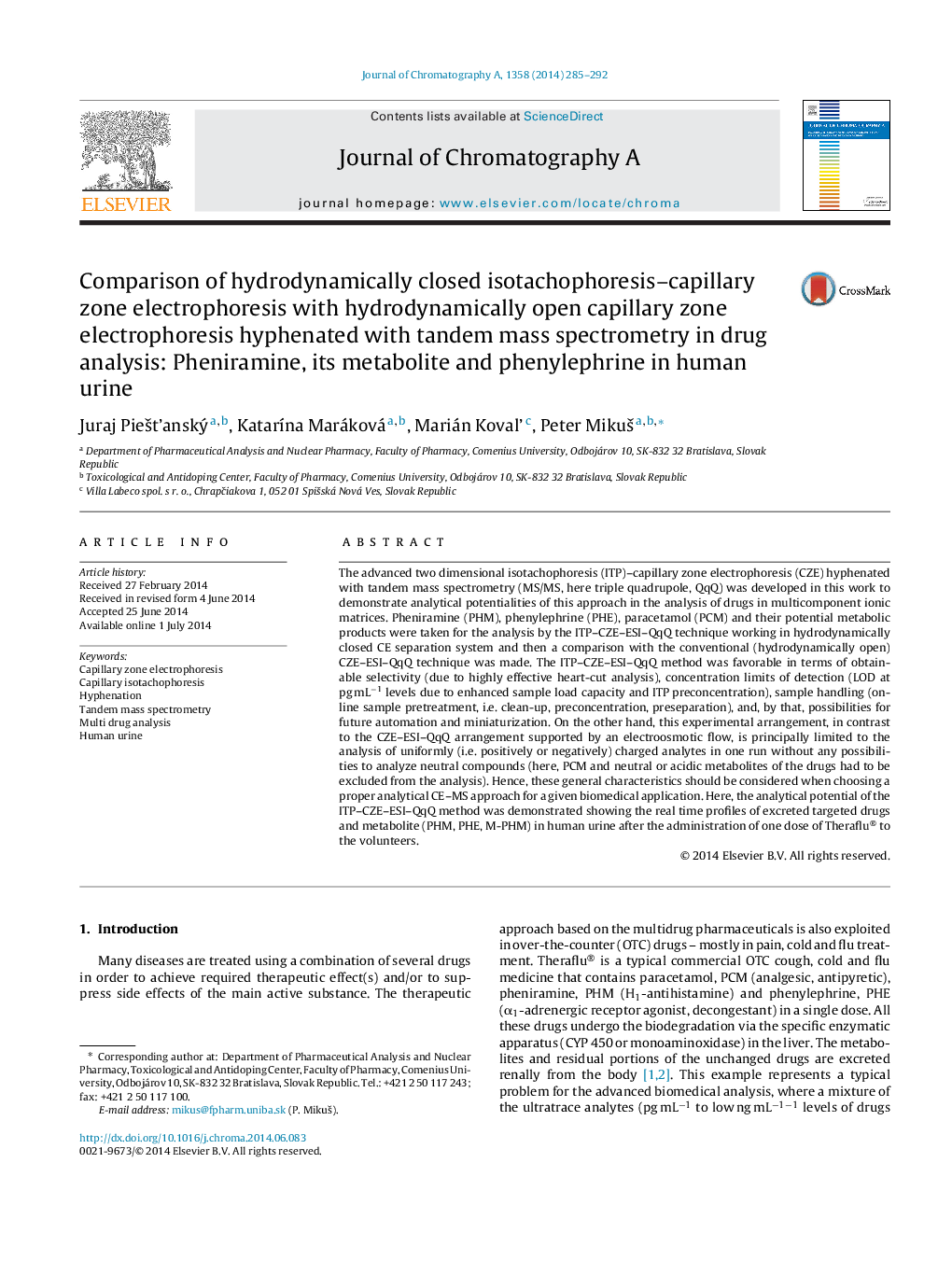| Article ID | Journal | Published Year | Pages | File Type |
|---|---|---|---|---|
| 7612804 | Journal of Chromatography A | 2014 | 8 Pages |
Abstract
The advanced two dimensional isotachophoresis (ITP)-capillary zone electrophoresis (CZE) hyphenated with tandem mass spectrometry (MS/MS, here triple quadrupole, QqQ) was developed in this work to demonstrate analytical potentialities of this approach in the analysis of drugs in multicomponent ionic matrices. Pheniramine (PHM), phenylephrine (PHE), paracetamol (PCM) and their potential metabolic products were taken for the analysis by the ITP-CZE-ESI-QqQ technique working in hydrodynamically closed CE separation system and then a comparison with the conventional (hydrodynamically open) CZE-ESI-QqQ technique was made. The ITP-CZE-ESI-QqQ method was favorable in terms of obtainable selectivity (due to highly effective heart-cut analysis), concentration limits of detection (LOD at pg mLâ1 levels due to enhanced sample load capacity and ITP preconcentration), sample handling (on-line sample pretreatment, i.e. clean-up, preconcentration, preseparation), and, by that, possibilities for future automation and miniaturization. On the other hand, this experimental arrangement, in contrast to the CZE-ESI-QqQ arrangement supported by an electroosmotic flow, is principally limited to the analysis of uniformly (i.e. positively or negatively) charged analytes in one run without any possibilities to analyze neutral compounds (here, PCM and neutral or acidic metabolites of the drugs had to be excluded from the analysis). Hence, these general characteristics should be considered when choosing a proper analytical CE-MS approach for a given biomedical application. Here, the analytical potential of the ITP-CZE-ESI-QqQ method was demonstrated showing the real time profiles of excreted targeted drugs and metabolite (PHM, PHE, M-PHM) in human urine after the administration of one dose of Theraflu® to the volunteers.
Keywords
Related Topics
Physical Sciences and Engineering
Chemistry
Analytical Chemistry
Authors
Juraj PieÅ¡Å¥anský, KatarÃna Maráková, Marián Kovaľ, Peter MikuÅ¡,
